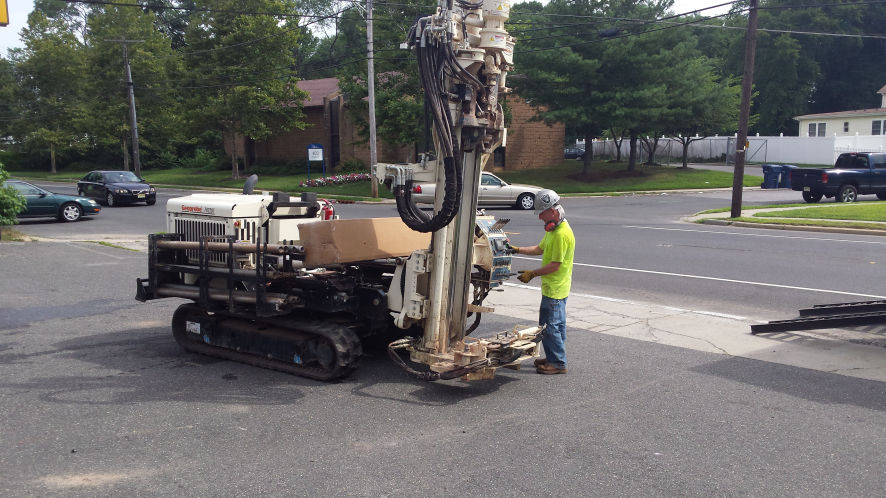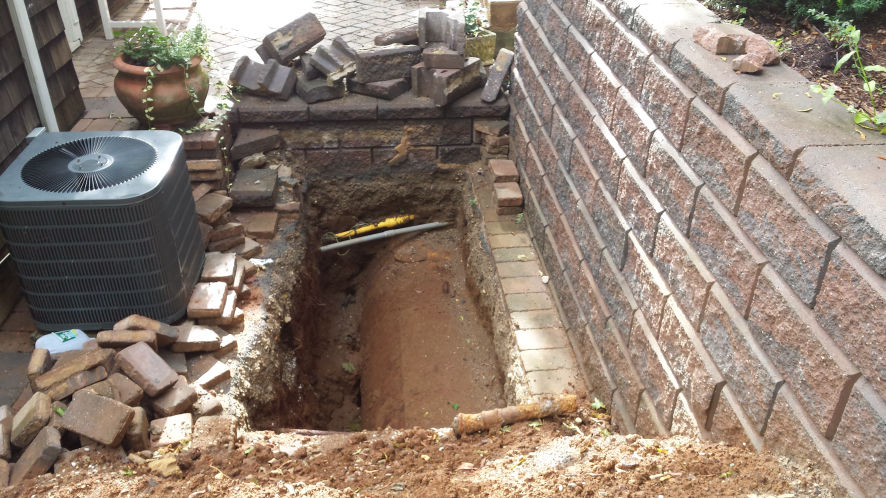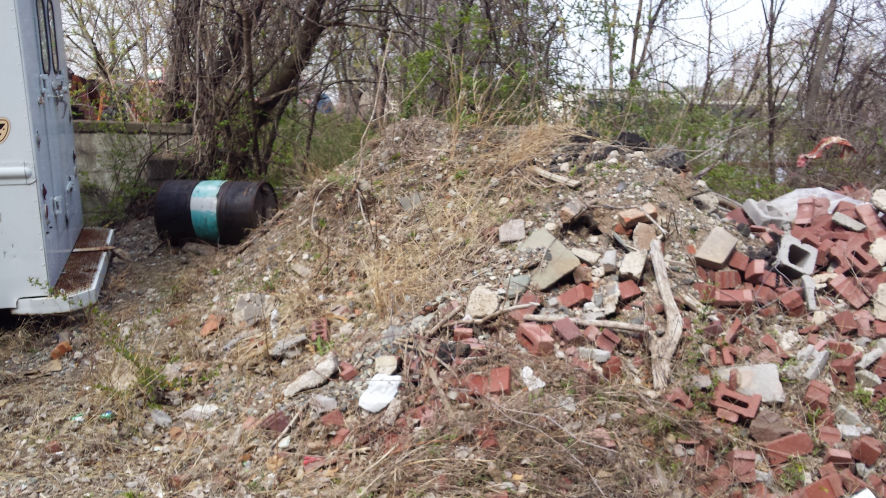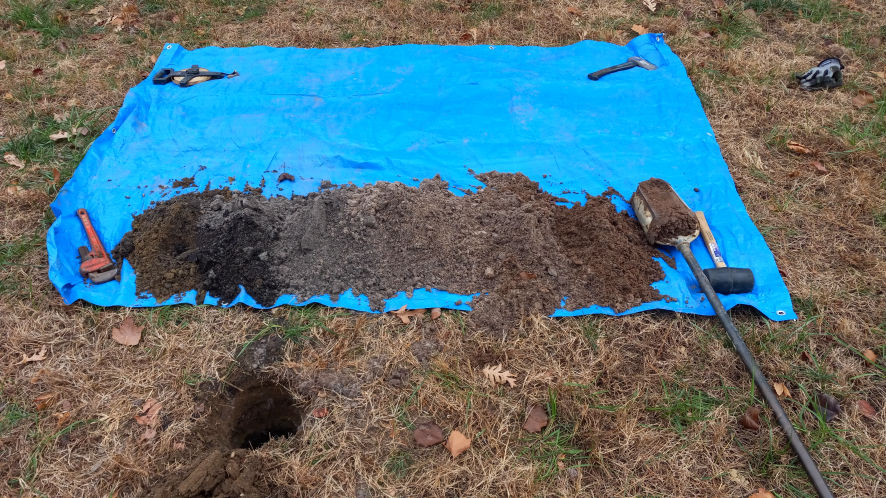
Limited Phase I Environmental Site Assessment (732) 291-5030
We do Limited Phase 1 Environmental Site Assessments for Developers, Builders, Investors, and Real Estate Professionals. Fast & Affordable give us a call for a estimate over the phone.

We do Limited Phase 1 Environmental Site Assessments for Developers, Builders, Investors, and Real Estate Professionals. Fast & Affordable give us a call for a estimate over the phone.
What is a limited Phase 1 Environmental Site Assessment?
A Limited Phase 1 Environmental Site Assessment (ESA) is a preliminary evaluation conducted to assess the environmental condition of a property. This assessment is typically performed in the context of real estate transactions, property development, or to meet regulatory requirements. Here are some key points about a Limited Phase 1 ESA:
Scope: The primary purpose of a Limited Phase 1 ESA is to identify potential environmental issues or risks associated with a property. It is a less comprehensive and less costly alternative to a full Phase 1 ESA.
Due Diligence: Property buyers, investors, lenders, and developers often commission Limited Phase 1 ESAs as part of their due diligence process to assess the environmental liability associated with a property before proceeding with a transaction or development.
Database Review: A Limited Phase 1 ESA typically involves a review of regulatory databases, aerial photographs, and limited historical land use information.
Interviews: The environmental consultant conducting the assessment may also conduct interviews with current and past property owners, occupants, and local regulatory agencies to gather information about the property's history.
Report: The findings of the Limited Phase 1 ESA are typically documented in a report. If no significant environmental concerns are identified, the report will conclude that no further investigation is warranted. If potential issues are identified, it may recommend further investigation, such as a Phase 2 ESA.
Time and Cost: Limited Phase 1 ESAs are typically faster and less expensive than full Phase 1 Environmental Site Assessments (ESAs) because they involve a more streamlined assessment process and less extensive research.
Liability Protections: Conducting a Limited Phase 1 ESA may provide some level of liability protection under federal and state environmental laws, such as the Comprehensive Environmental Response, Compensation, and Liability Act (CERCLA) in the United States.
It's important to note that the scope and standards of Limited Phase 1 ESAs can vary based on industry practices. If environmental concerns are identified during a Limited Phase 1 ESA, further assessment, such as a, full Phase 1 ESA, or Phase 2 ESA involving soil and groundwater testing, may be recommended to determine the extent and severity of contamination.
Before initiating any environmental assessment, it's advisable to consult with environmental professionals who are familiar with industry best practices to ensure that the assessment meets your specific needs.
How much does a limited Phase 1 Environmental Site Assessment Cost?
The cost of a Limited Phase 1 Environmental Site Assessment (ESA) can vary significantly depending on several factors, including the location of the property, its size, the complexity of the assessment, and the specific requirements of the project. Additionally, the fees charged by environmental consultants or firms can differ. As of my last knowledge update in September 2021, I can provide you with a general range of costs, but please keep in mind that prices may have changed since then.
In the United States, a Limited Phase 1 ESA typically costs between $500 to $1,000 on average. However, this cost can be lower for smaller properties with fewer potential environmental concerns and higher for larger or more complex properties with a greater likelihood of issues.
Several factors can influence the cost of a Limited Phase 1 ESA
Property Size: Larger properties may require more time for site inspections and research, leading to higher costs.
Location: Properties in areas with known or suspected environmental issues may require more extensive investigations, potentially increasing the cost.
Scope of Work: The specific scope of the assessment can impact the cost. A more comprehensive Limited Phase 1 ESA with additional research or interviews may cost more than a basic assessment.
Additional Services: If the Limited Phase 1 ESA identifies potential issues that require further investigation (e.g., a Phase 2 ESA), those additional services will come with their own costs.
It's important to obtain cost estimates from multiple environmental consulting firms and discuss your specific needs and the scope of work required. This will help you get a more accurate understanding of the cost for your particular project and location. Keep in mind that prices can vary over time and across different regions, so it's essential to obtain up-to-date quotes from reputable environmental consultants or firms in your area.
What is a Typical Phase 1 Environmental Site Assessment?
A Phase 1 Environmental Site Assessment (ESA) is a comprehensive investigation conducted to assess the environmental condition of a property. It is typically performed as part of the due diligence process for real estate transactions, property development. Here are the key components of a typical Phase 1 ESA:
Scope of Work: A Phase 1 ESA follows the American Society for Testing and Materials (ASTM) Standard E1527-21 in the United States. The scope of work is defined by this standard and typically includes:
A review of historical records: This involves researching historical land use, property ownership, and regulatory records to identify any past activities or conditions that might have contributed to environmental contamination.
Site inspection: Environmental professionals visit the property to conduct a visual inspection. They examine the current and past uses of the property, as well as any potential environmental concerns, such as storage tanks, chemical storage areas, or signs of contamination.
Interviews: The assessors may interview current and past property owners, occupants, and local regulatory agencies to gather information about the property's history and any known environmental issues.
Regulatory database searches: Environmental databases are queried to identify any known or suspected environmental issues in the vicinity of the property.
Report: The findings of the Phase 1 ESA are documented in a comprehensive report. This report includes a description of the property, the scope of work conducted, a summary of historical research, details of the site inspection, any identified Recognized Environmental Conditions (RECs), and conclusions regarding environmental risks.
Recognized Environmental Conditions (RECs): RECs are the key findings of the Phase 1 ESA. They are conditions that suggest the presence or likely presence of hazardous substances on the property. RECs are typically red flags that warrant further investigation.
Recommendations: If RECs are identified, the Phase 1 ESA report may include recommendations for further investigation, such as a Phase 2 ESA. A Phase 2 ESA involves soil and groundwater testing to confirm the presence and extent of contamination.
Liability Protections: Conducting a Phase 1 ESA may provide some level of liability protection under federal and state environmental laws, such as the Comprehensive Environmental Response, Compensation, and Liability Act (CERCLA) in the United States.
The purpose of a Phase 1 ESA is to identify potential environmental risks associated with a property so that buyers, investors, lenders, and developers can make informed decisions about whether to proceed with a transaction or development. If significant environmental issues are identified, further assessment and remediation may be necessary to address these concerns.
It's important to note that the scope and standards of Phase 1 ESAs can vary based on local regulations and industry practices, and they are typically conducted by qualified environmental consultants or firms with expertise in environmental assessments.
What is Limited Phase 1 Environmental Site Assessment compared to a Phase 1 Environmental Site Assessment?
The primary difference between a Limited Phase 1 Environmental Site Assessment and a Phase 1 Environmental Site Assessment lies in the scope and depth of the assessment:
Phase 1 Environmental Site Assessment (Phase 1 ESA)
Comprehensive Scope: A Phase 1 ESA is a comprehensive and in-depth investigation of a property's environmental history and conditions. It follows industry standards, such as ASTM E1527-21 in the United States.
Extensive Research: It involves a thorough review of historical records, site visits, interviews with current and past property owners or occupants, regulatory database searches, and a detailed examination of the property.
Recognized Environmental Conditions (RECs): The goal of a Phase 1 ESA is to identify RECs, which are indications of potential environmental contamination or risks. These findings may trigger the need for further investigation, such as a Phase 2 ESA.
Comprehensive Report: The results are documented in a comprehensive report that includes a detailed assessment of the property's environmental condition, identified RECs, and recommendations for additional actions, if necessary.
Greater Cost: Due to its comprehensive nature and thorough research, a Phase 1 ESA is typically more expensive than a Limited Phase 1 ESA.
Limited Phase 1 Environmental Site Assessment (Limited Phase 1 ESA)
Focused Scope: A Limited Phase 1 ESA has a more limited or focused scope compared to a full Phase 1 ESA.
Streamlined Investigation: It may involve fewer historical record reviews, a more limited site inspection, and a less extensive review of the property's history.
Identifying Obvious Issues: The primary purpose of a Limited Phase 1 ESA is to identify obvious or easily detectable environmental issues or risks. It's often used when there is some knowledge or suspicion of potential problems.
Concise Report: The findings are typically documented in a shorter and more concise report.
Lower Cost: Limited Phase 1 ESAs are generally less expensive than full Phase 1 ESAs due to their reduced scope and less extensive research.
In summary, the main distinction between a Limited Phase 1 Environmental Site Assessment and a Phase 1 Environmental Site Assessment is the depth and comprehensiveness of the assessment. A Limited Phase 1 ESA is a more focused and cost-effective option, suitable for situations where there is less uncertainty about potential environmental issues, whereas a full Phase 1 ESA is a more thorough investigation used when a more comprehensive understanding of a property's environmental condition is needed, such as for real estate transactions. The choice between the two depends on the specific needs of the project and the level of risk associated with the property.
What Triggers a Phase 1 Environmental Site Assessment?
A Phase 1 Environmental Site Assessment (ESA) is typically triggered by various factors, including legal requirements, due diligence in real estate transactions, potential environmental concerns, or the desire to obtain liability protections. Here are common triggers for a Phase 1 ESA:
Real Estate Transactions: One of the most common triggers is a real estate transaction, such as buying or selling a property. Lenders and investors often require a Phase 1 ESA as part of the due diligence process to assess the environmental risks associated with the property.
Lender Requirements: Many lending institutions, particularly banks and financial institutions, require a Phase 1 ESA as a condition for providing a mortgage or loan for a property purchase. They do this to protect their interests and ensure they are not financing a property with significant environmental liabilities.
Regulatory Requirements: In some cases, local, state, or federal regulations may require a Phase 1 ESA as part of permitting or compliance processes. Certain industries, like manufacturing or chemical production, may be subject to more stringent environmental regulations that necessitate this assessment.
Environmental Concerns: If there are visible signs of potential environmental issues on or near a property, such as chemical spills, abandoned storage tanks, or contamination from nearby facilities, this can trigger a Phase 1 ESA to investigate the extent of the problems.
Property History: Knowledge of a property's historical uses, such as industrial or commercial activities, can raise concerns about potential contamination. If a property has a history of uses that could have led to environmental issues, it may prompt a Phase 1 ESA.
Ownership Changes: When a property changes ownership, whether through sale, inheritance, or other means, the new owners may choose to conduct a Phase 1 ESA to understand any potential environmental liabilities they may inherit.
Risk Management: Property owners or prospective buyers may proactively commission a Phase 1 ESA to assess and manage potential environmental risks, even in the absence of specific triggers or requirements.
Redevelopment Plans: Properties slated for redevelopment or change in land use, such as converting industrial sites to residential or commercial use, often undergo Phase 1 ESAs to ensure compliance with environmental regulations and assess potential cleanup costs.
Insurance Requirements: Some insurance companies may require a Phase 1 ESA before offering coverage for environmental liabilities.
It's essential to consult with environmental professionals and legal advisors to determine whether a Phase 1 ESA is necessary for your specific situation. The decision to conduct a Phase 1 ESA should take into account property history, and the nature of the transaction or project. Conducting this assessment can help identify and manage environmental risks, potentially avoiding costly issues in the future.
What is required in a limited Phase 1 Environmental Site?
A Limited Phase 1 Environmental Site Assessment (Limited Phase 1 ESA) is a focused environmental assessment conducted to identify potential environmental concerns associated with a property. While the specific requirements can vary depending on local regulations and industry practices, a Limited Phase 1 ESA typically includes the following key components:
Historical Records Review: Limited research is conducted to review historical documents and records related to the property. This typically includes reviewing historical land use records, property ownership history, and past uses of the property. Any documented environmental incidents or concerns related to the property or nearby sites are considered.
Regulatory Database Searches: Environmental databases are queried to identify any regulatory actions, violations, or known contamination issues in the vicinity of the property. This step helps assess the potential impact of nearby activities on the property.
Report: The findings of the Limited Phase 1 ESA are documented in a report. The report typically includes the property address, the scope of work conducted, any identified Recognized Environmental Conditions (RECs), and conclusions regarding environmental risks.
Recognized Environmental Conditions (RECs): RECs are the primary focus of a Limited Phase 1 ESA. These are conditions or concerns that suggest the presence or likely presence of hazardous substances on the property. The assessment aims to identify and document RECs that may require further investigation or remediation.
Recommendations: If RECs are identified, the Limited Phase 1 ESA report may provide recommendations for further actions or assessments. Depending on the findings, this may include suggesting a full Phase 1 Environmental Site Assessment, or a Phase 2 Environmental Site Assessment (ESA) to confirm the presence and extent of contamination. It's important to note that the scope and standards of Limited Phase 1 ESAs can vary based on industry practices. This type of assessment is typically conducted when there is some prior knowledge or suspicion of potential environmental concerns, and it is often more cost-effective and faster than a full Phase 1 ESA. However, if significant environmental issues are identified during a Limited Phase 1 ESA, further assessment or investigation may be necessary to address those concerns.
Limited Phase 1 Environmental Site Assessment
It saves money and time. Time is important for a competitive real estate market where good land or site can be off the market in a few days. A Limited Phase 1 gives you fast environmental information on a site at a reduced cost. And it can be transformed into a full Phase 1 Environmental Site Assessment if necessary at an additional cost.



